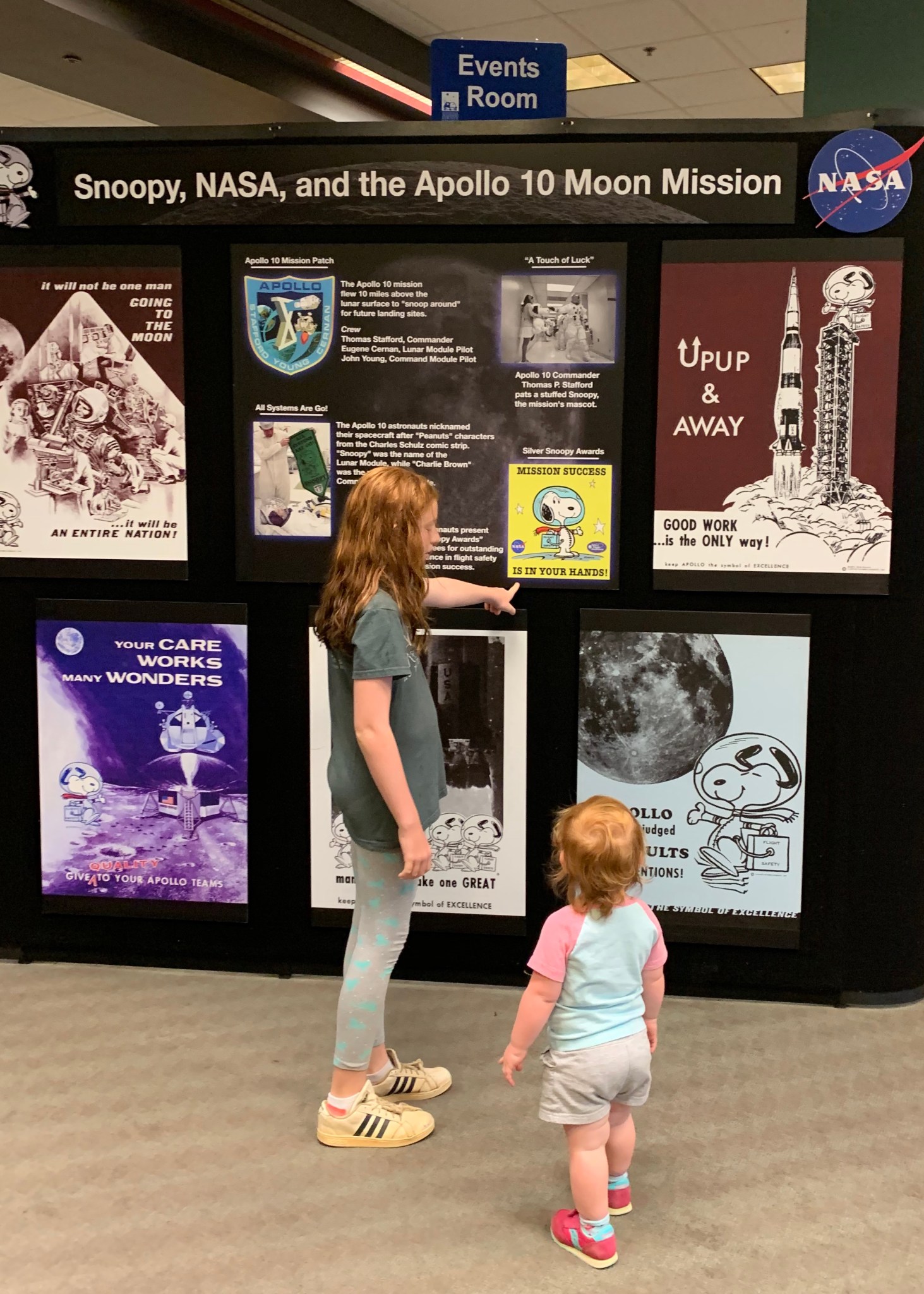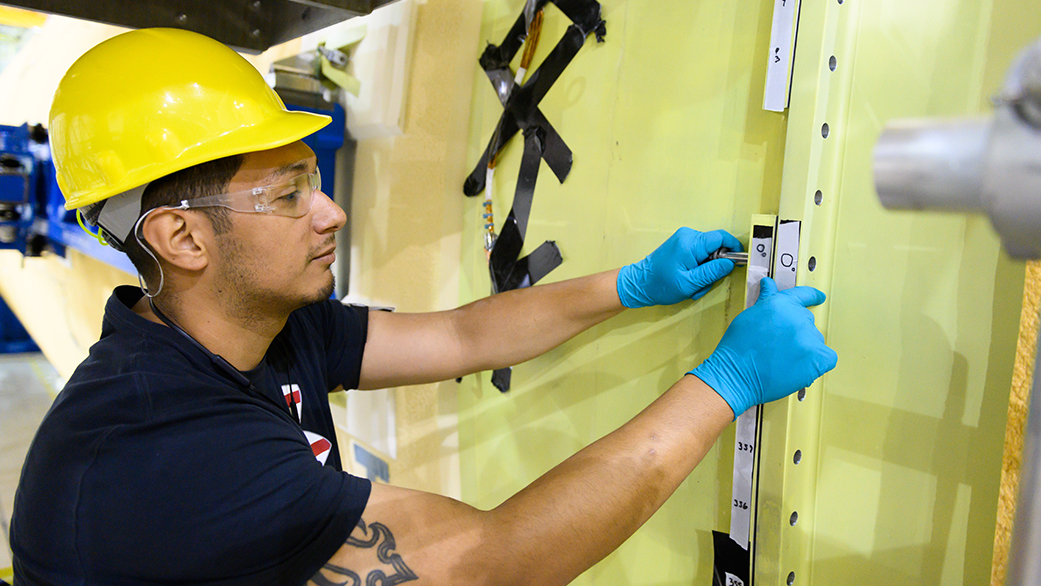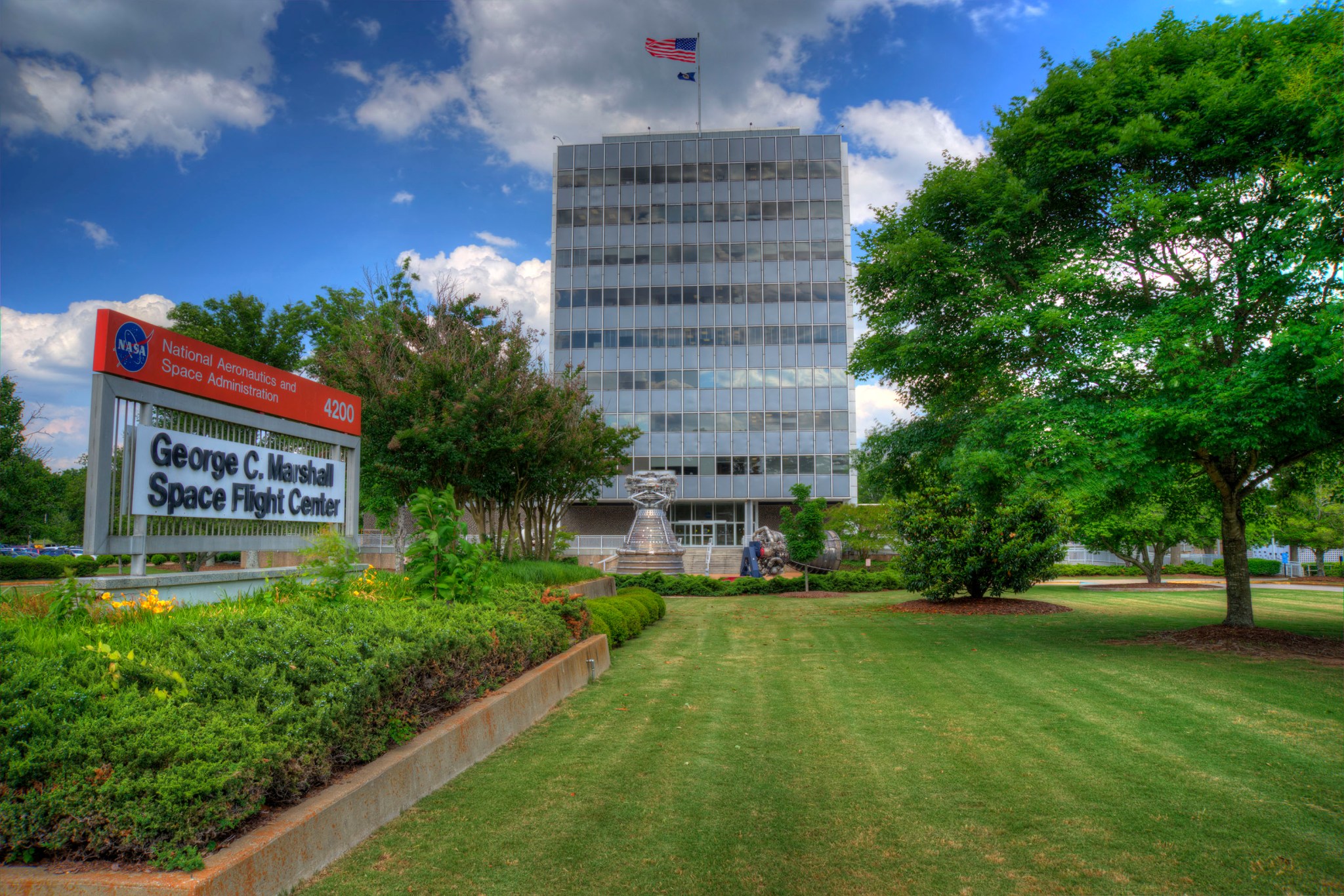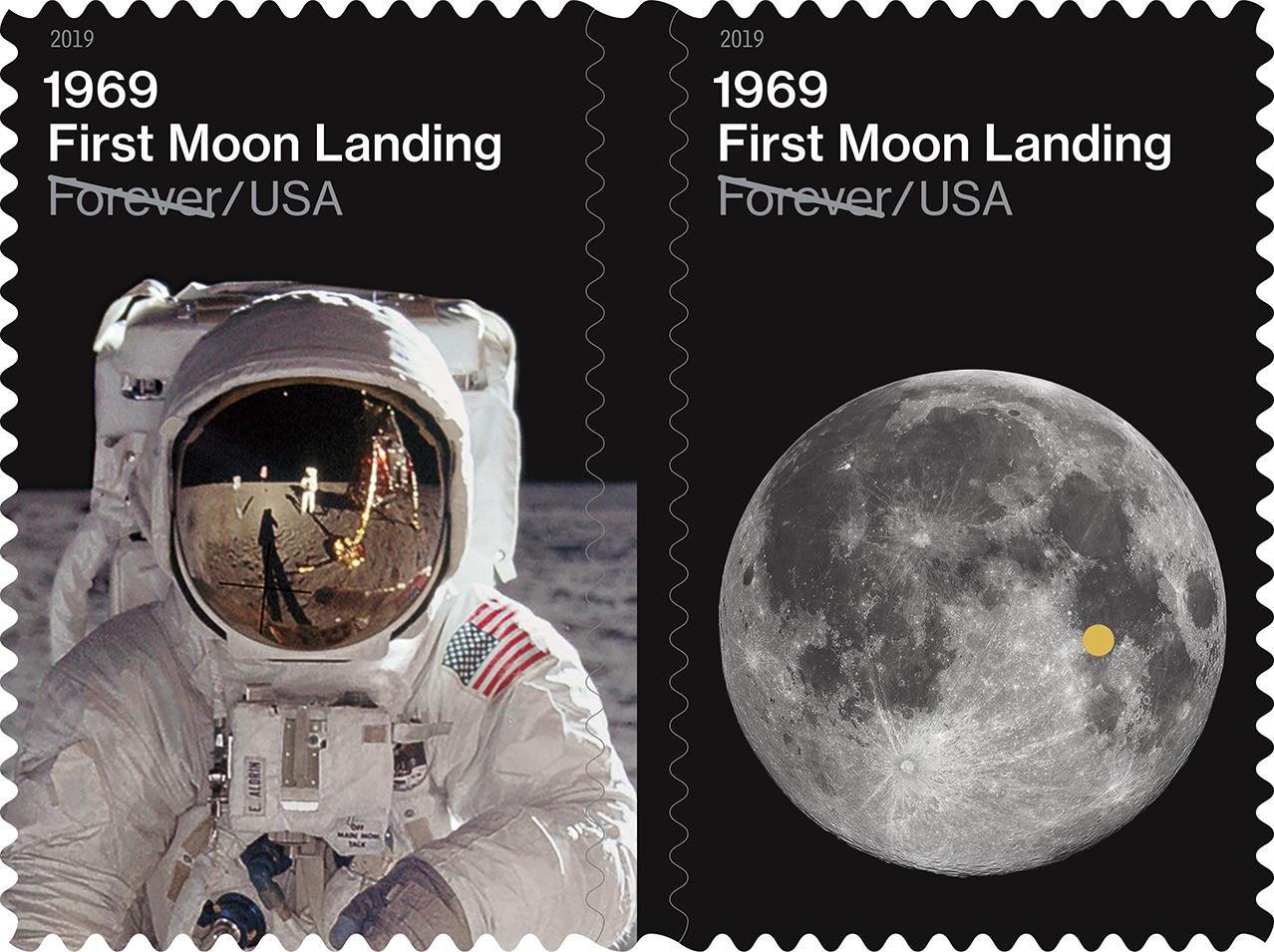In This Week’s Star
- Marshall, Huntsville Join in Celebrating Apollo Anniversary with Summer Events
- NASA Associate Administrator Steve Jurczyk, Deputy Associate Administrator Melanie Saunders to host all-hands June 19
- Latest NASA Milestone Marks Significant Progress for SLS Rocket
- ‘Take Our Children to Work Day’ Set for June 18, Registration Open
- Marshall Displays Olympic Spirit at Alabama State Games Opening Ceremony
- Marshall Civil Servants: Make Your Voices Heard in Employee Viewpoint Survey
- US Postal Service Issuing First Moon Landing ‘Forever’ Stamps
- This Week in NASA History: Marshall Completes Structural Assembly of S-IU-500V – June 14, 1965
Marshall, Huntsville Join in Celebrating Apollo Anniversary with Summer Events
By Rick Smith
This summer, NASA’s Marshall Space Flight Center and Huntsville are celebrating the 50th anniversary of Apollo 11’s July 20, 1969, touchdown on the Moon. Art shows, panel talks and exhibits will celebrate humanity’s first visits to another celestial body – and raise excitement for our return to the Moon and future journeys to Mars.
The NASA History Wall will be part of “Making Alabama: A Bicentennial Traveling Exhibit” at the Huntsville Botanical Garden’s Propst Guest Center now through July 12. Marking 200 years of Alabama’s statehood, the exhibit highlights state history and culture, including the impact of NASA and Marshall in “Rocket City USA” and nationwide. The exhibit will visit all 67 Alabama counties by year’s end. For hours and other information, visit the website.
“To the Moon: Snoopy Soars with NASA,” a celebration of Charles M. Schulz’s classic Peanuts character and his long association with America’s space program, will be at the downtown Huntsville-Madison County Public Library now through July 27. The exhibition is co-hosted by the Greater Huntsville Humane Society. On display are original newspaper comic strips from March 1969 featuring Snoopy’s trip to the Moon.
Visitors also can learn about NASA’s Silver Snoopy Award program which honors NASA civil servants and contractors chosen by the astronaut corps for outstanding service to human spaceflight. Visit the library’s website for further information.
“A New Moon Rises,” a traveling Smithsonian Institution exhibit celebrating Earth’s natural satellite, will be at the Huntsville Museum of Art now through Aug. 11. It features some of the more than 1 million high-resolution photos of the lunar surface taken by NASA’s Lunar Reconnaissance Orbiter Camera. Visit the museum’s website for admission fees and hours of operation.
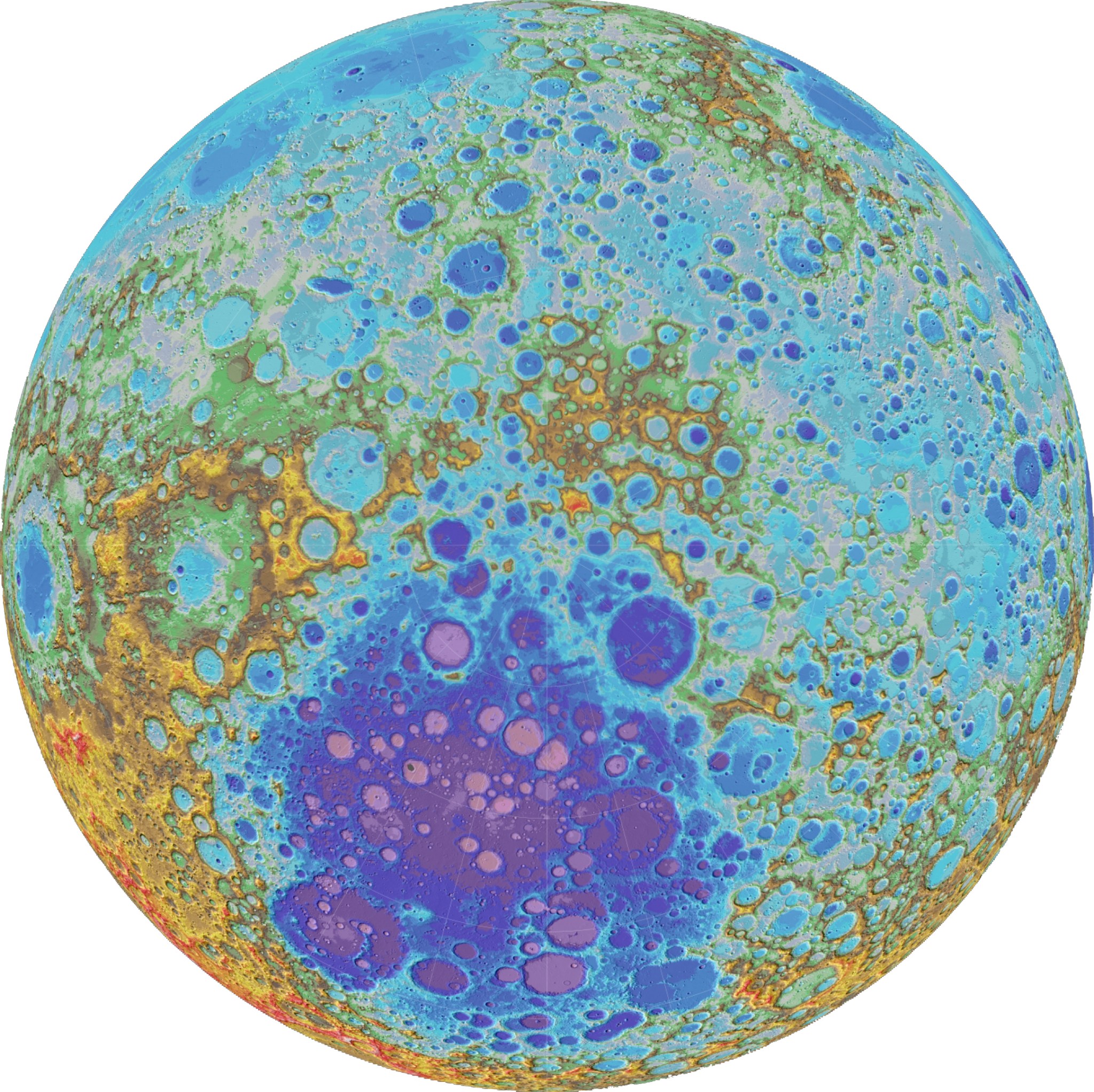
Launched in 2009, the orbiter and its payload, the Lunar Crater Observation and Sensing Satellite mission, conducted an unprecedented mapping mission of the lunar surface, identifying potential landing sites and favorable terrain for future human and robotic missions. The orbiter continues to deliver detailed lunar maps. Managed by NASA’s Goddard Space Flight Center, LRO is part of NASA’s Discovery Program, managed by Marshall for NASA’s Science Mission Directorate.
The U.S. Space & Rocket Center is featuring, through December, “Apollo: When We Went to the Moon,” an exhibit chronicling NASA’s history from early rocket testing for the Mercury and Gemini programs that preceded Apollo, to our modern, collaborative endeavors on the International Space Station. Artifacts, memorabilia and reminiscences by the engineers and astronauts who forged our first journeys to the Moon will be on display through December. Visit the website for admission prices and hours.
The Space & Rocket Center also will host a “Marshall Center Director Panel” on June 20 as part of its “Pass the Torch” series. Discussing the highlights and challenges of leading one of NASA’s largest field centers will be Marshall Director Jody Singer and former directors Todd May, who directed Marshall from 2016-2018; Patrick Scheuermann, director from 2012-2015 and director of NASA’s Stennis Space Center from 2010-2012; Robert Lightfoot, director from 2009-2012, and NASA acting administrator from 2017-2019; and Carolyn Griner, acting Marshall director in 1998. Moderating the panel will be Ed Buckbee, a former NASA publicist under Marshall’s first director, Wernher von Braun; and Gene Goldman, who led Marshall as acting director and director in 2012. The free panel will be from 2:30-4:30 p.m. in the Discovery Theater.
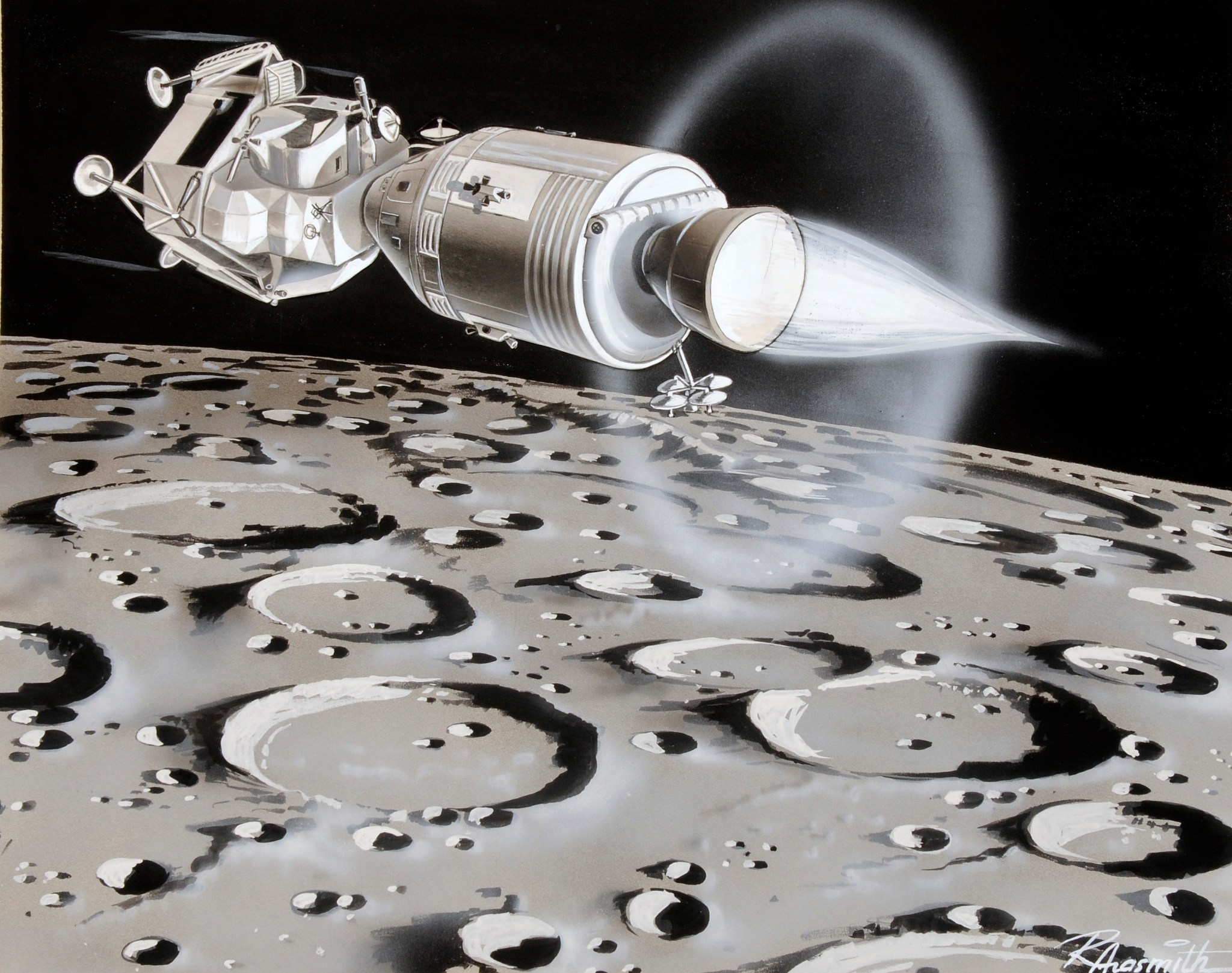
The Huntsville Arts Council will celebrate the Apollo 11 lunar landing July 15 as part of its 1960s-themed “Concerts in the Park” series. Local musicians Big Daddy Kingfish and JED Eye will perform on the outdoor stage in Big Spring Park from 6:30-8:30 p.m. The event is free. Concertgoers can bring their own seating or blankets, and leashed pets are welcome. Food trucks and vendors will be on-site. Parking will be free in the Monroe Street garage, and handicapped parking is available at the museum.
The Huntsville Arts Council also will host an exhibition of original Apollo-era artwork at the Von Braun Center from June 28 through Sept. 19. Marshall Exhibits personnel and curators at the U.S. Space & Rocket Center are selecting pieces from Marshall’s art collection to display.
Watch the Marshall Star for more details on these and other exhibits and art shows, and visit NASA’s Apollo anniversary events page for additional televised and public events around the nation.
Smith, an ASRC Federal/Analytical Services employee, supports the Office of Strategic Analysis & Communications.
NASA Associate Administrator Steve Jurczyk, Deputy Associate Administrator Melanie Saunders to host all-hands June 19
NASA Associate Administrator Steve Jurczyk and Deputy Associate Administrator Melanie Saunders will host an all-hands meeting at NASA’s Marshall Space Flight Center on June 19 at 10 a.m. in Building 4200’s Morris Auditorium.
The all-hands is part of Jurczyk and Saunders’ tour of NASA field centers.
Marshall Center Director Jody Singer will kick off the all-hands and there will be an opportunity to ask questions after the meeting concludes. You may submit questions securely from any computer or mobile device beginning June 19 and throughout the meeting.
To submit a question:
- Go to www.nasa.gov/townhall
- Access the Marshall Space Flight Center session
- Click “+ Ask” or, if your question is already on the list, vote it up the list by clicking the arrow on the left.
Marshall team members unable to attend can watch the all-hands meeting live on Marshall Desktop TV.
Latest NASA Milestone Marks Significant Progress for SLS Rocket
NASA achieved a significant milestone in manufacturing the first large, complex core stage that will help power the Space Launch System rocket on upcoming missions to the Moon. The agency and lead contractor Boeing assembled four-fifths of the massive core stage needed to launch SLS and NASA’s Orion spacecraft on the first Artemis mission to the Moon. At approximately 190 feet — about the size of 12 cars parked end to end — the stage in its current configuration is the largest rocket stage the agency has built since the Saturn V stages that first sent humans to the Moon nearly 50 years ago. The completed core stage, which includes the two propellant tanks as well as four RS-25 engines and the engine section, will tower at 212 feet. It, along, with the twin five-segment solid rocket boosters, will produce the majority of the power to send SLS and Orion to space. This milestone comes after crews at NASA’s Michoud Assembly Facility completed the second of three major activities to join the liquid hydrogen fuel tank to the upper part of the core stage. (NASA)
‘Take Our Children to Work Day’ Set for June 18, Registration Open
By Rick Smith
NASA’s Marshall Space Flight Center will host its annual “Take Our Children to Work Day” on June 18 from 9 a.m. to 4 p.m. Team members can register their children and grandchildren on ExplorNet.
This year’s event will include hands-on activities, guided tours and demonstrations by Marshall team members and various local partner organizations. Children in grades 3-12 can participate. Children 15 and younger accompanied by a NASA employee do not require badging for admission to Redstone Arsenal.
Take Our Children to Work Day shows young people how their family members contribute to the nation’s space program. It further challenges children to study and pursue careers in the STEM fields — science, technology, engineering and mathematics.
Marshall’s Office of Diversity and Equal Opportunity is seeking volunteers to support activities and tours. Team members are invited to sign up here.
Tours will include the Flight Dynamics Laboratory’s unique flat-floor facility; the Payload Operations Integration Center, where NASA manages International Space Station science; and laboratories devoted to 3D printing and scanning, and development of advanced environmental controls and life support systems, such as those developed at Marshall for the space station. Additional presentations will focus on NASA spinoff technologies; scientific examination of fluid dynamics in action and the superconductive properties of liquid nitrogen; space weather monitoring; severe weather safety tips from WAFF-TV meteorologist Brad Travis; and planning for the future by Huntsville City Council President Devyn Keith.
Displays and exhibits will be presented all day in Building 4316 by NASA TV, the FBI, Hudson Alpha Institute for Biotechnology in Huntsville, and the Golden Hurricane robotics team from Columbia High School in Huntsville. Children also can take a virtual reality tour of the Space Launch System, NASA’s next rocket to the Moon and Mars; learn more about the phases of the Moon; make a variety of space-themed crafts and memorabilia; and commemorate the day with a picture at the NASA photo kiosk.
The Boeing Co. will sponsor a game room in Building 4708 where children can learn to program robots, complete a working circuit or gravity maze, use Legos to study basic engineering principles and assemble a space rover, orbiter or Moon station.
Food trucks and the Marshall cafeteria will offer kid-friendly fare — pizza, hamburgers, hot dogs, chicken sandwiches and fries — from 11 a.m. to 1 p.m. The day’s activities will conclude with a free showing of “The Lego Movie 2” in Building 4316 from 1-3 p.m.
For more information, email Amanda Otieno or Emily Naderi, equal opportunity specialists in Marshall’s Office of Diversity and Equal Opportunity.
Smith, an ASRC Federal/Analytical Services employee, supports the Office of Strategic Analysis & Communications.
Marshall Displays Olympic Spirit at Alabama State Games Opening Ceremony
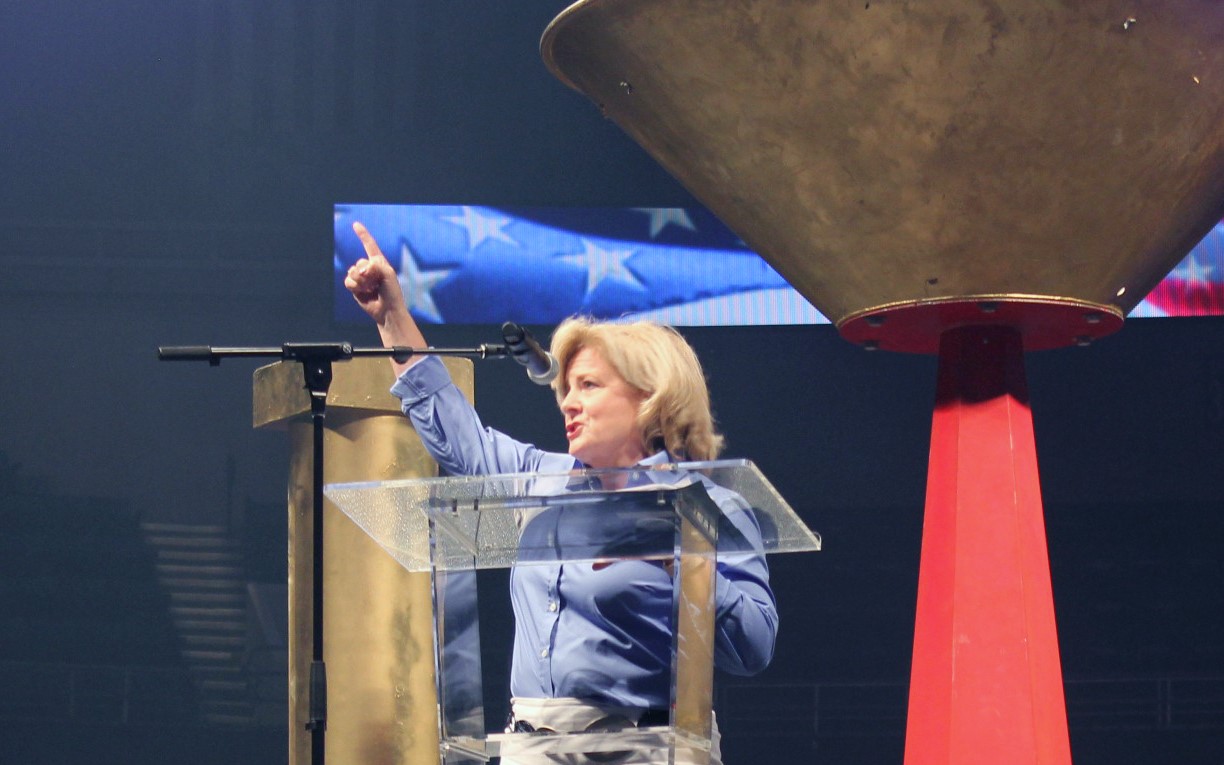
Marshall Space Flight Center Director Jody Singer delivers the keynote speech at the 37th Alabama State Games opening ceremony June 7 at the Von Braun Center’s Propst Arena in Huntsville. “Alabama — by way of SLS — will lead our nation’s return to the Moon and put Mars within reach of a new generation of explorers,” Singer said of the Space Launch System, speaking to the estimated crowd of more than 4,000 athletes and their supporters. “To deliver on this mission, we are relying on the students of today to take us farther than we can imagine. As I look into the crowd, I see the next generation of explorers, scientists and pioneers.” A video highlighting the Artemis program was shown following Singer’s remarks. The ceremony was broadcast statewide. Athletes competed in 29 sports from June 8-9. (NASA/Chris Blair)
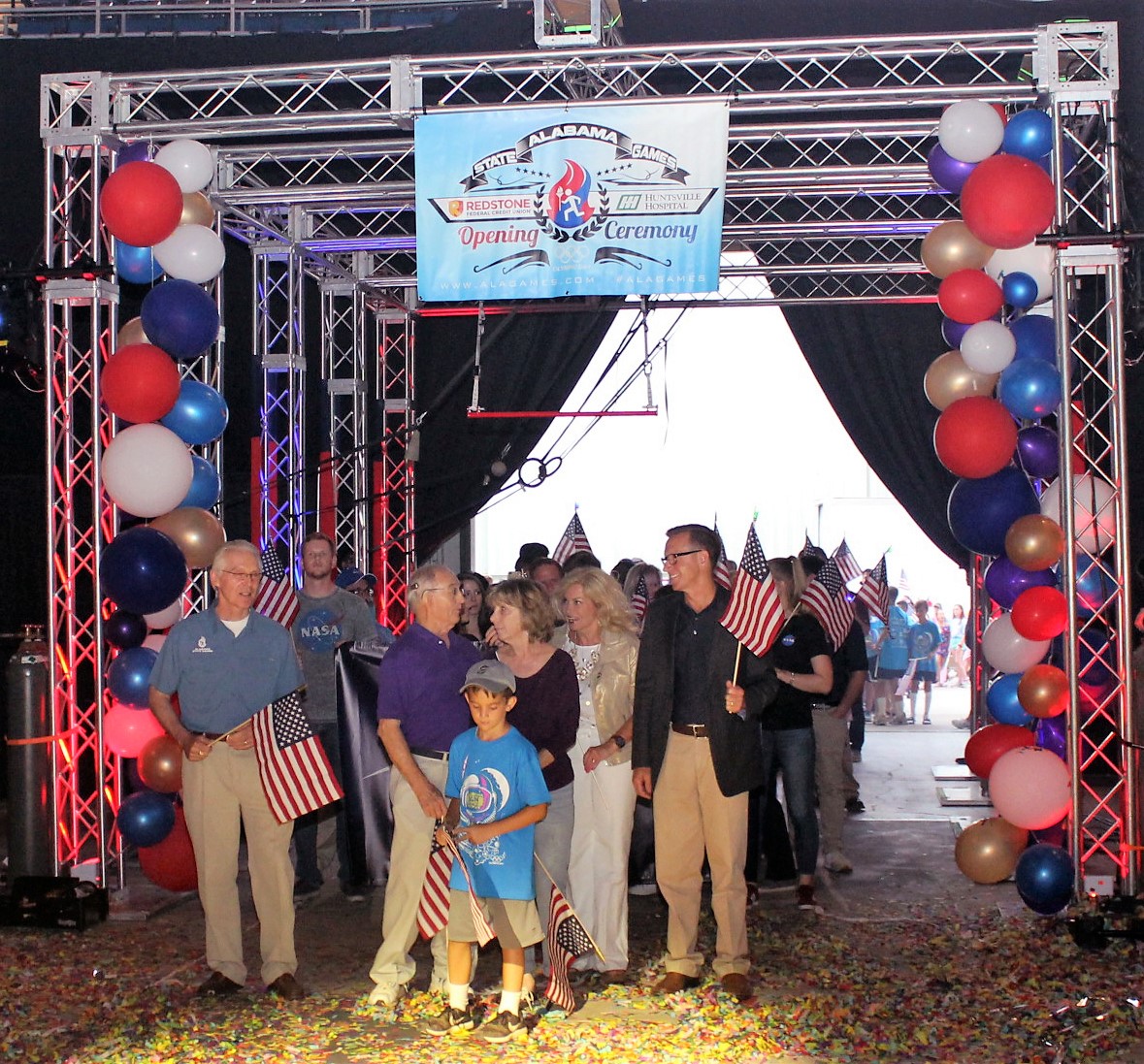
Marshall Associate Director Steve Miley and his wife, Dana, a Marshall human resources specialist, join Marshall volunteers and interns to lead a group of athletes into the Von Braun Center arena during the Alabama State Games opening ceremony June 7. In addition to the parade of athletes, the ceremony featured Olympic staples such as the running of a torch and lighting of a flame. Marshall Center Director Jody Singer and U.S. Space & Rocket Center CEO Deborah Barnhart served as grand marshals for the parade. (NASA/Chris Blair)
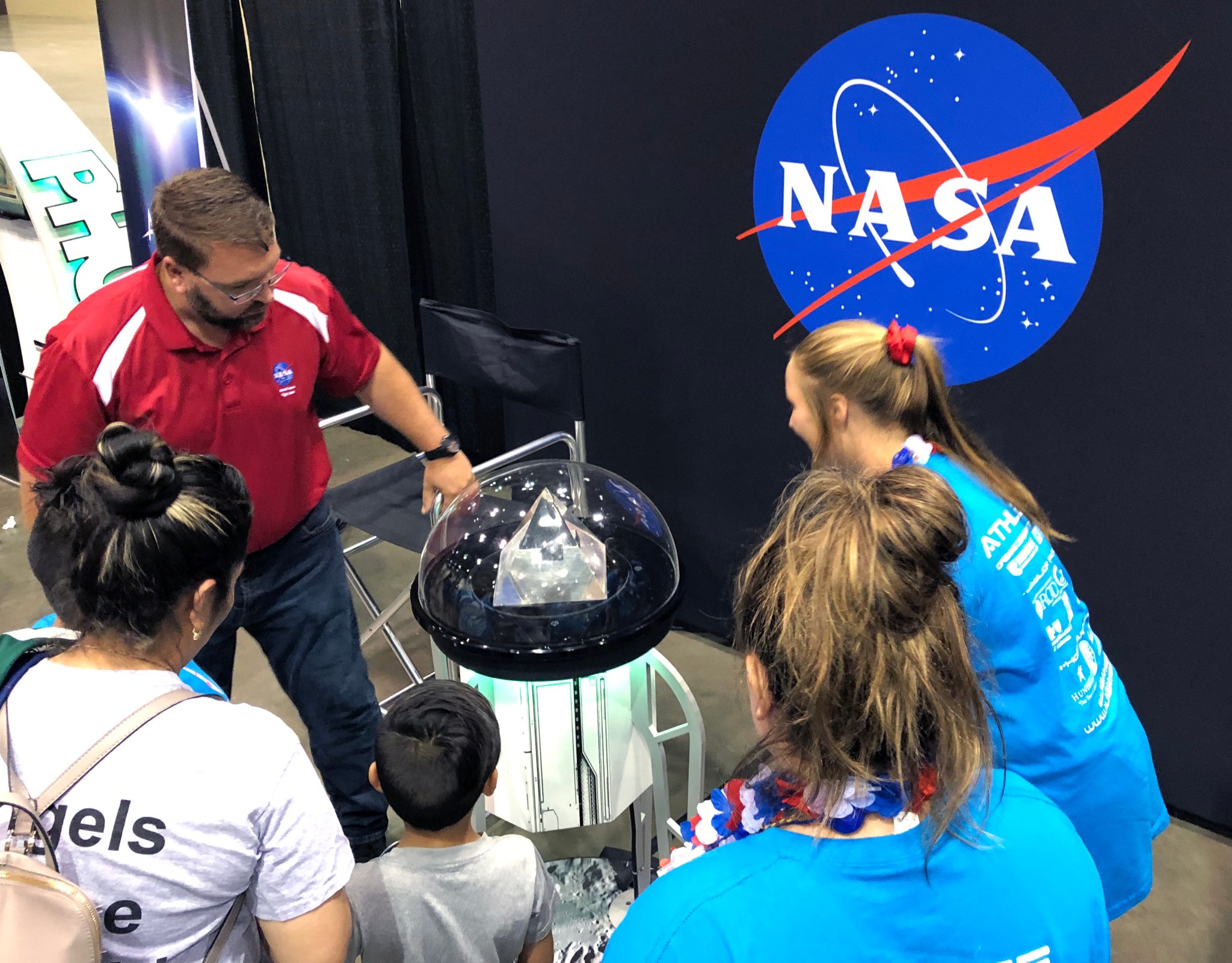
Marshall education specialist Fred Kepner gives details about a lunar rock collected by Commander Dave Scott during the Apollo 15 mission in 1971, during the Alabama State Games FanFair at the Von Braun Center’s South Hall on June 7. The lead-up to the opening ceremony featured multiple NASA exhibits. (NASA/Chris Blair)
Marshall Civil Servants: Make Your Voices Heard in Employee Viewpoint Survey
Just a few weeks remain for civil service team members at NASA’s Marshall Space Flight Center to participate in the 2019 Federal Employee Viewpoint Survey, which concludes July 5.
Supervised by the Office of Personnel Management, the survey is open to full-time and part-time civil servants. It is designed to empower employees and inspire change, providing administrators with insight about employee satisfaction and suggestions for improving or augmenting the work of personnel working in or for federal agencies.
“We count on your feedback to help increase our understanding of employee engagement priorities,” Marshall Director Jody Singer told team members when the survey began May 23. “As we return to the Moon in 2024, our strength and resilience are of utmost importance,” she added — so Marshall can deliver on its mission and its leadership can foster the most effective civilian workforce possible.
This year’s survey includes expanded queries in the “Work-Life” and “Demographic” sections and invites comments about the partial government shutdown in winter 2018-2019.
As of June 11, approximately 30 percent of Marshall employees had responded, said Lisa Hall, a Marshall human resources specialist.
“Each year, OPM shares federal survey data with the Partnership for Public Service, which uses it to identify the best places to work in the federal government,” Hall said. “NASA has been ranked first among large agencies for seven consecutive years. To continue to receive this feedback, we need survey participation.”
The email-based survey is voluntary and takes approximately 25 minutes to complete. All responses are confidential. Answers to frequently asked questions are available here. Employees hired or made permanent after October 2018 will not be eligible to take part in the annual survey until 2020. Eligible civil service employees who have not yet received an email invitation should contact OPM at EVNN@opm.gov.
The survey closes at 11:59 p.m. on July 5.
US Postal Service Issuing First Moon Landing ‘Forever’ Stamps
By Will Bryan
To mark the 50th anniversary of the first Moon landing, the U.S. Postal Service will issue two “forever” stamps July 19.
One stamp will feature NASA astronaut Neil Armstrong’s iconic photograph of astronaut Edwin “Buzz” Aldrin Jr. in his spacesuit on the surface of the Moon. The other stamp, a photograph of the Moon taken in 2010 by Madison, Alabama, resident Gregory H. Revera from his home, includes a dot to show the landing site of the lunar module, Eagle, in the Sea of Tranquility. Postal Service art director Antonio Alcalá designed the stamp art.
NASA’s Marshall Space Flight Center played a vital role in the success of the Apollo program. Both the Saturn V rocket that launched the astronauts to the Moon and the Saturn IB rocket that tested the Apollo capsule in Earth orbit were developed by the Marshall team. The team also developed the lunar rovers that were used in the final three lunar landing missions.
Today, Marshall supports the Artemis program by managing the development of NASA’s Space Launch System, the world’s most powerful rocket that will send humans back to the Moon in 2024. Members of the Marshall team also support International Space Station operations and are helping test habitats for use beyond low-Earth orbit.
Visit the Apollo 50th website for an in-depth look at the program, including historic footage, audio tapes, photography, posters, resources and information on anniversary events across the country.
The Postal Service is sharing news on the new stamps on social media using the hashtags #MoonLandingStamps and #AstronautStamps.
Bryan, an ASRC Federal/Analytical Services employee, supports the Office of Strategic Analysis & Communications.
This Week in NASA History: Marshall Completes Structural Assembly of S-IU-500V – June 14, 1965
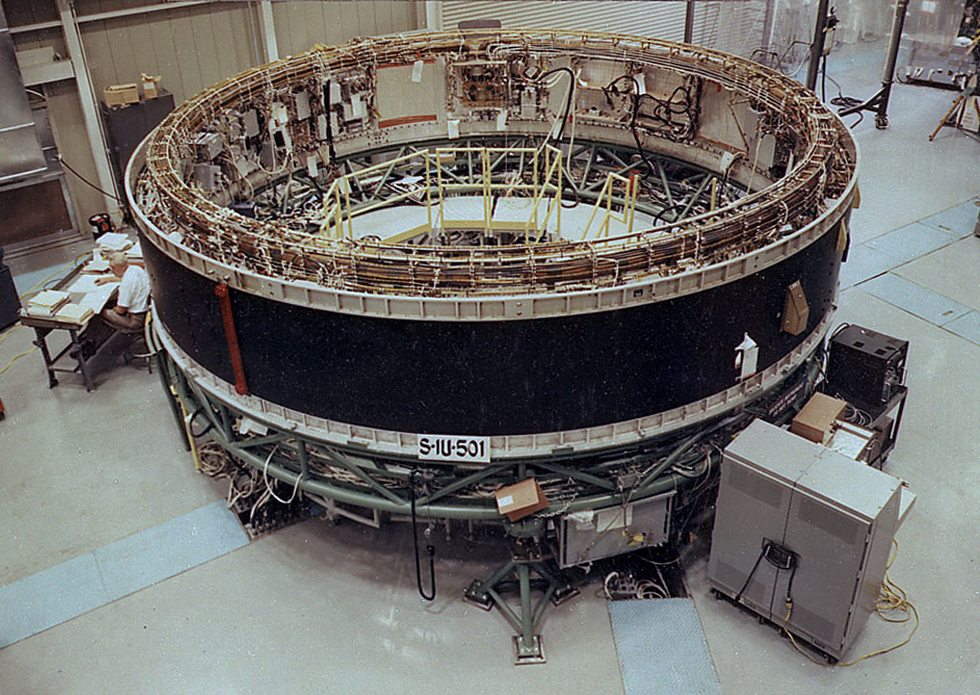
This week in 1965, NASA’s Marshall Space Flight Center completed structural assembly of the Saturn V vibration test article, S-IU-500V. Designed by Marshall and built by IBM, the instrument unit served as the nerve center for the Saturn V, providing guidance and control, command and sequence of vehicle functions, telemetry and environmental control. Here, a technician checks the systems of S-IU-501, employed on the Apollo 4’s rocket, in a test facility. Now through December 2022, NASA will mark the 50th anniversary of the Apollo Program that landed a dozen astronauts on the Moon between July 1969 and December 1972, and the first U.S. crewed mission — Apollo 8 — that circumnavigated the Moon in December 1968. The NASA History Program is responsible for generating, disseminating and preserving NASA’s remarkable history and providing a comprehensive understanding of the institutional, cultural, social, political, economic, technological and scientific aspects of NASA’s activities in aeronautics and space. For more pictures like this one and to connect to NASA’s history, visit the Marshall History Program’s webpage. (NASA)


























